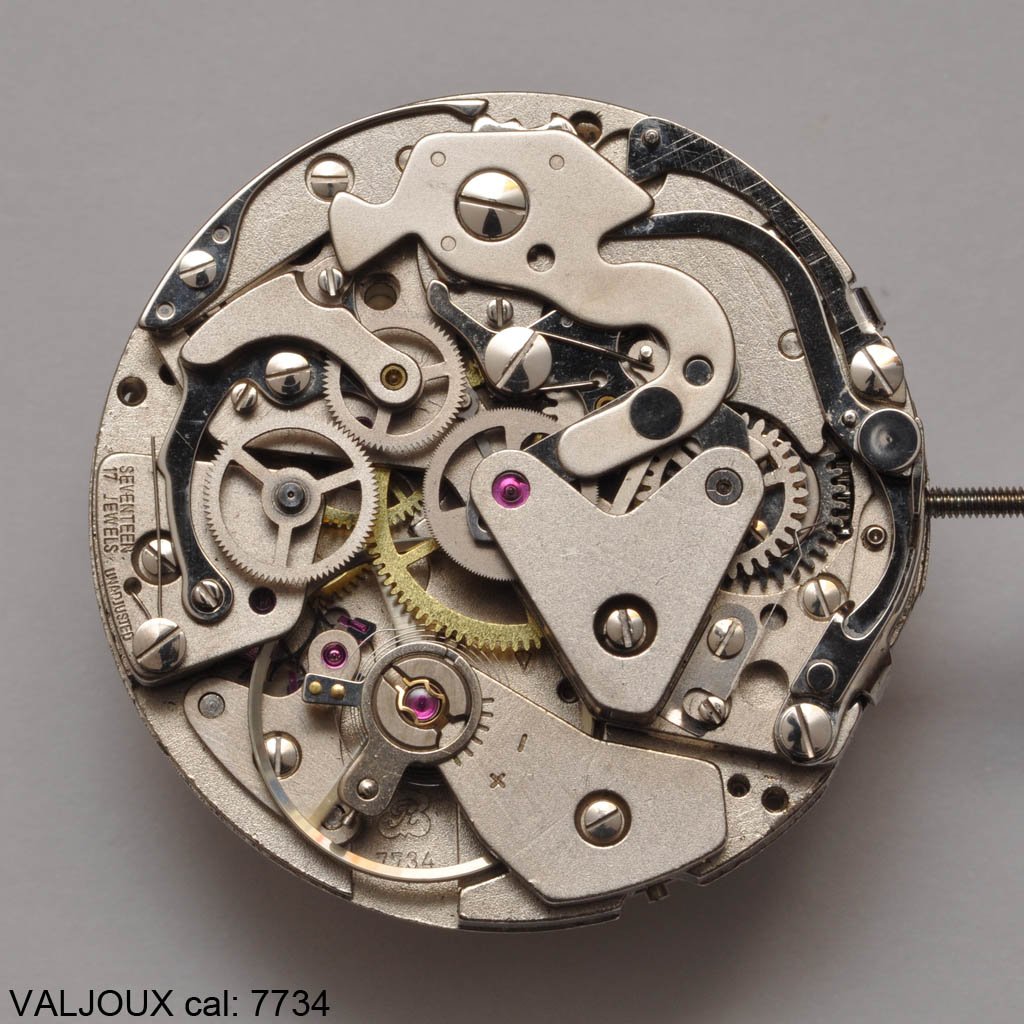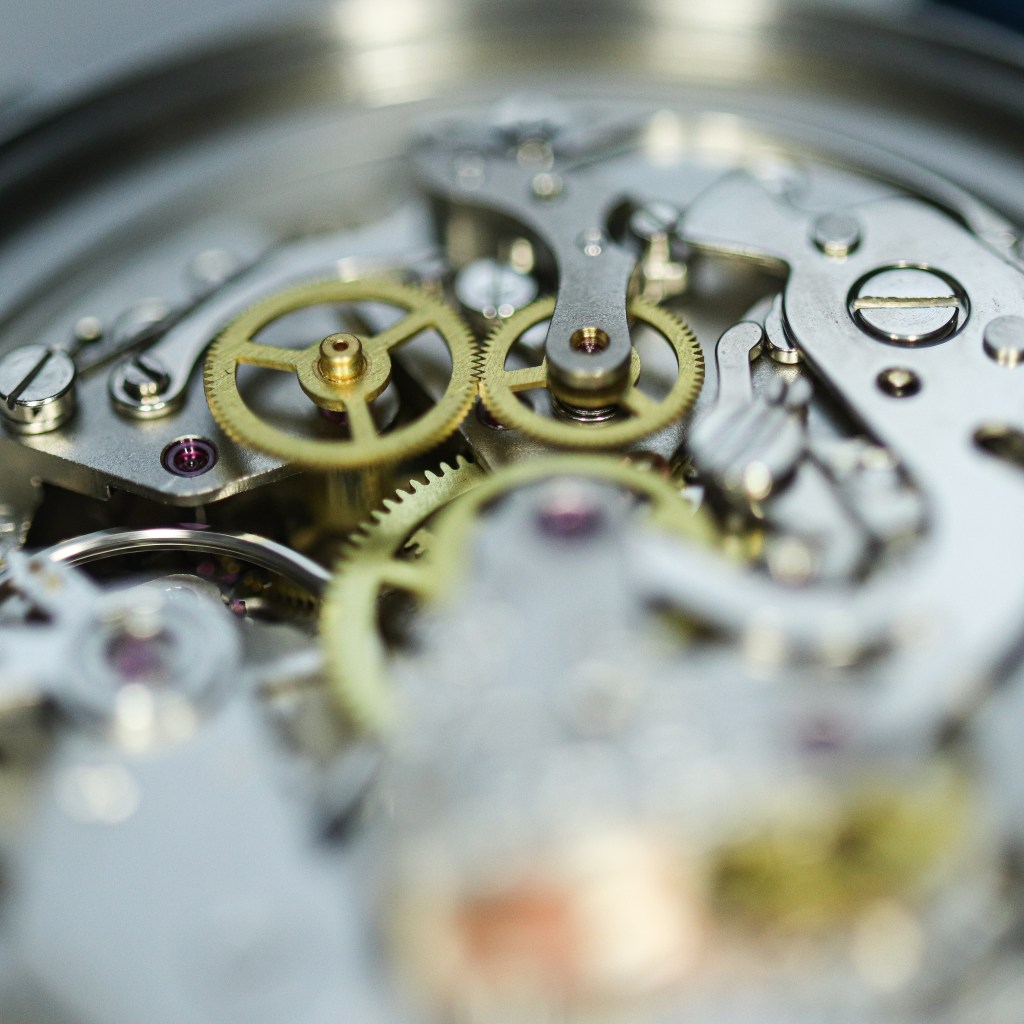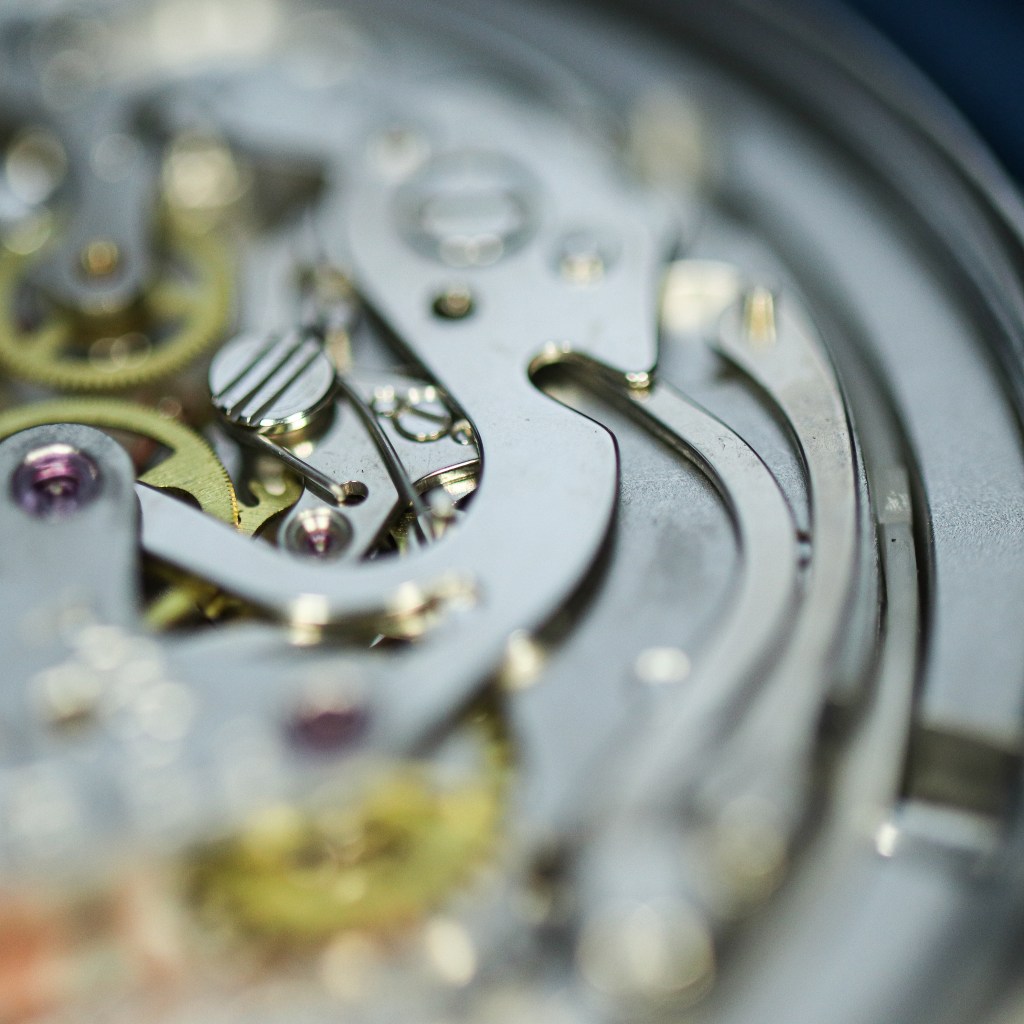In 1976, the First Moscow Watch Factory began production of a new mechanical watch movement with stopwatch function. This movement was the successor of the now the ageing caliber 3017 as the premier chronograph movement in the USSR. Design work was based on already proven Venus caliber 188, featuring a cam actuator first patented by Landeron in 1940. This cam-lever mechanism was easier to produce than the column-wheel actuator of the 3017, and therefore could more affordably be mass produced and that was the key part why USSR chose this movement over others they could’ve bought. USSR in those times were all about fast, easy, cheap, which kind of isn’t the best combination if you think about watches, but it worked out for them!
The Venus company produced the caliber 188 movement from 1949 until they withdrew from the marketplace in 1966. At this time, another Swiss company, Valjoux, bought the tools and rights to manufacture the caliber 188. From 1966 until 1968, Valjoux produced a slightly modified version of the chronograph, rebranded caliber 7730. At this point, Valjoux further refined the movement with the introduction of the calibers 7733 (no date complication) and 7734 (with date function).
In 1974, Valjoux discontinued production of the caliber 7734 and sold the tools, parts, and rights to the First Moscow Watch Factory. While most parts remained unchanged, some initial modifications made by Soviet engineers included a taller main plate, a third wheel plate with jewel bearing, fully-jewelled chronograph gears, a smaller/faster/shock-protected balance (beating at 21,600 A/h), 23 total jewels, and a quickset date mechanism. The new Soviet chronograph movement would be called the caliber 3133. And for the first time in history a Russian chronograph was equipped with shock protection.
In 1976, the plant began production of a new wristwatch with a stopwatch: the chronograph model 3133. For this development, the team of designers of the First Moscow Watch Factory was awarded the State Prize. Initially, the watch was intended for the officers of the Navy and was called “Ocean” (product 731). Later, a modification for the Air Force flight personnel was produced under the name “Shturmanskie” (model 31659, a watch with a locked second hand and a zone time indicator) and a watch “Shturmanskie” with a zone time indicator (model 3133). All these models were produced in limited quantities with military acceptance. Only nine years later, in 1983, watches with the 3133 movement became available to general public.
The Poljot 3133 Ocean watch was taken into space by cosmonauts from Russia, France, Germany, Ukraine, and together with V.V. Polyakov, this chronograph set a record for the duration of a space flight.
Below is a picture of Japanese journalist-cosmonaut, Toyohiro Akiyama taken during his historical flight. Another Soviet space first, Akiyama was the first private citizen to buy passage on a space flight. Akiyama was a member of the Soyez TM-11 mission that linked up with the Mir space station. The cost, a reported 28 million dollars, was paid by TBS, the Tokyo Brodcasting System. While in space, Akiyama sent a series of live broadcasts back to the earth. The watch Akiyama wore was an all stainless steel, Soviet Air Force, 31659 caliber, hacking Sturmanskie.
Of course, these few watches are not the only watches to be worn by cosmonauts. Just about any watch that the Soviets produced could have been worn in space. The list of the watches that were permitted for space flight was not as strictly regulated as say, NASA does.
The Poljot Watch Factory continued to produce the cal. 3133 chronograph up until the end of 2004, when the MakTime company purchased the Poljot cal. 3133 machinery, relocated the equipment to their factory in south-east Moscow, and continued production starting in June 2005. After only a few short years, low-sales/profits and out-dated equipment forced an end to production in 2011. The MakTime company produced the cal. 3133 for a handful of companies including Moscow Classic, Volmax (Aviator, Sturmanskie, Buran), Juri Levenberg (Pilot, Strela), Poljot-International, PoinTec (Junkers, Zepplin), Poljot-Chonos (The President), as well as their own in house brands (MakTime, MWG).
As of July 2013, new movements continue to be available in remaining retail stocks, however, some of the more popular cal. 3133 chronographs, such as the Zeppelin models, are now nearing extinction.
Right now the last production Ocean watches is the Sturmankie Ocean final edition with the Poljot cal. 3133 which is limited to only 200 pieces (Made in Moscow) and I got a chance to check it out with a help from Poljot24.de which I give a huge thank you, especially to the guy behind the store Mr. Julian Kampmann! Poljot24 is the best Europe store where to look for any Russian watches for really great prices! If you can’t choose one, then write to Julian, and he will help you, as he is very kind, and super knowledgable about every Russian timepiece he sells! You can read a full review of the watch here! And this watch that Julian sent me for review will be bought by my grandpa as he liked it so much, he just needed to have it, as he served on a nuclear submarine is the USSR and have seen these back in the day on wrists of higher officers and was always on hunt for one! He is an avid USSR watch collector by the way!




























I have Poljot chronograph 3133, movement No. 67711, Case No. 757086. When were they made ?
Thank you.
Anton
Slovakia
LikeLike